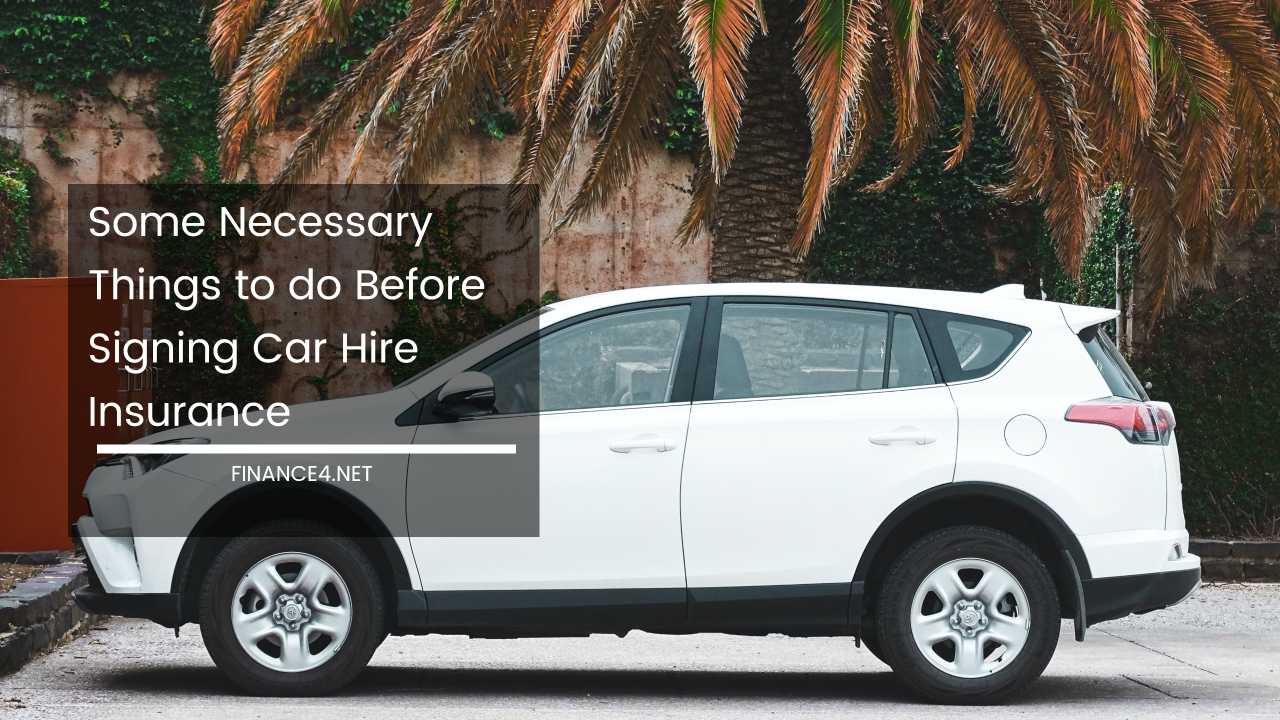Conquering Car Hire Insurance: Your Essential Guide

Renting a car unlocks a world of possibilities, offering the freedom to explore new destinations and navigate unfamiliar roads at your own pace.
However, the excitement of hitting the open road can be dampened by the complexities of car hire insurance. With various coverages, confusing terminology, and seemingly endless options, choosing the right policy can feel like navigating a labyrinth. Fear not, intrepid traveler!
This comprehensive guide will equip you with the knowledge and confidence to navigate the car hire insurance maze and emerge with the perfect plan for your journey.
Gathering Your Gear: Essential Documents for Takeoff
Before embarking on your insurance exploration, ensure you have all the necessary documents at hand. The most critical one is your valid driver’s license.
This serves as proof of your legal driving authorization. Additionally, a copy of your driving record is often required.
This document unveils your driving history, including any tickets, accidents, or other violations. A clean record, free of blemishes, typically translates to lower premiums and a wider range of policy options.
On the other hand, a history of driving infractions might translate to higher insurance costs or limited coverage options.
Understanding the Roadblocks: Factors Affecting Your Insurance Premium
Several factors beyond your driving record influence your car hire insurance premium. Buckle up and explore these key influences:
-
Location, Location, Location: This age-old adage applies to car hire insurance as well. Insurance rates fluctuate depending on your geographic location. Areas with statistically higher accident rates generally translate to higher premiums. For example, renting a car in a bustling city center with heavy traffic will likely cost more to insure compared to a rural area with fewer vehicles on the road.
-
Age and Gender: While not as significant as location or driving history, age and even gender can play a role in determining your insurance rate. Some companies may offer discounts for young drivers, while others might charge a premium. Similarly, rates might vary slightly based on gender in some regions. However, this practice is becoming less common due to anti-discrimination regulations.
-
Choosing Your Steed: Vehicle Type Matters: The car you choose significantly impacts the insurance cost. A standard sedan will have a lower coverage amount compared to a luxurious sports car. The vehicle’s power, performance capabilities, and safety features also influence the final rate. High-performance vehicles with powerful engines and a history of theft are generally considered riskier to insure and will come with higher premiums.
-
Charting Your Course: Coverage Needs and Options: Insurance regulations vary by state, but car hire insurance should always cover property damage and personal injury in case of an accident. This means if you damage another driver’s car or injure someone in an accident, the insurance company will cover the costs up to the policy limits. The coverage limits (the maximum amount the insurance company pays) will depend on the policy type and your chosen premium. Don’t hesitate to explore optional coverages that can provide additional peace of mind. Here are some popular options to consider:
- Collision Damage Waiver (CDW): This helps with repair costs after a collision, even if you are at fault.
- Loss Damage Waiver (LDW): This covers damage to the rental car caused by theft, vandalism, fire, or weather events.
- Personal Accident Insurance (PAI): This provides medical coverage for you and your passengers in case of injuries sustained during an accident.
- Personal Effects Coverage: This covers your personal belongings if they are stolen from the rental car.
Research is Key: Charting the Best Course
Investing time in researching car hire insurance policies is crucial. Start by outlining your specific needs and desired coverage levels. Are you planning a leisurely road trip through scenic countryside, or will you be navigating busy city streets?
The type of driving you anticipate will influence the coverage you need. Utilize online resources to compare various plans and pinpoint ones that align with your requirements.
Reputable comparison websites allow you to input your desired coverage levels, location, and rental car type to generate quotes from different insurance providers. Don’t be afraid to contact insurance companies directly for personalized quotes as well.
Seeking recommendations from friends and family who have recently rented cars can also be beneficial. Their firsthand experiences can provide valuable insights into different insurance providers and their offerings.
Unlocking Savings: Discount Opportunities Await
Good news for responsible drivers! Insurance companies often reward safe driving habits with attractive discounts.
Maintaining a clean driving record with no accidents or violations can significantly reduce your premium.
Additionally, some policies offer multi-car discounts if you’re insuring multiple vehicles. Modern safety features like anti-theft alarms, airbags, and automatic emergency braking systems can also lead to potential discounts.
Don’t forget to inquire about these options when comparing policies. Furthermore, some credit card companies offer car hire insurance benefits as part of their rewards programs.
Understanding the Fine Print: A Crucial Step
Before finalizing your car hire insurance, take your time to thoroughly review the policy document. This critical step ensures you fully understand the terms and conditions, including:
- Coverage Details: This section outlines what is covered under the policy, including the specific types of damage, injuries, and losses protected.
- Exclusions: It’s equally important to understand what is not covered by the policy. Common exclusions might include damage caused by driving under the influence, off-road driving, or neglecting basic car care.
- Deductibles: The deductible is the amount you pay out of pocket before the insurance company kicks in. Choosing a higher deductible typically translates to a lower premium, but it also means you’ll be responsible for a larger sum in case of a claim.
- Claim Procedures: Familiarize yourself with the process for filing a claim in case of an accident or damage to the rental car. Understanding the steps involved and the required documentation will ensure a smoother claims experience.
Negotiation: Can You Haggle?
While negotiating car hire insurance premiums might not be as common as negotiating a used car price, it doesn’t hurt to inquire.
If you have a clean driving record and are a loyal customer of the insurance company, politely inquire about potential discounts or special offers. You might be surprised at the savings you can unlock with a simple conversation.
Beyond the Basics: Additional Considerations
This guide equips you with the essential knowledge to navigate car hire insurance efficiently. However, staying informed is key. Here are some additional considerations to keep in mind:
- Rental Company Coverage: Some rental car companies offer their own insurance options. Be sure to compare these options to the coverage you’re considering purchasing separately.
- Personal Insurance Coverage: In some cases, your personal car insurance policy might extend coverage to rental vehicles. However, limitations and exclusions might apply. It’s crucial to check with your auto insurance provider to understand the extent of coverage offered for rentals.
- Foreign Travel: If you’re planning to rent a car abroad, additional considerations come into play. International driving permits might be required, and insurance regulations can vary greatly from country to country. Research local requirements and explore insurance options specifically designed for international car rentals.
The Final Lap: Signing with Confidence
Once you’ve thoroughly reviewed the policy document, compared quotes, and understand the terms and conditions, you’re ready to sign on the dotted line.
By following these steps, you’ll have secured the perfect car hire insurance plan for your needs, allowing you to embark on your journey with peace of mind.
Remember, the key lies in understanding your requirements, doing your research, and choosing a policy that offers the right balance of coverage and affordability. So, buckle up, hit the gas, and enjoy the ride!



